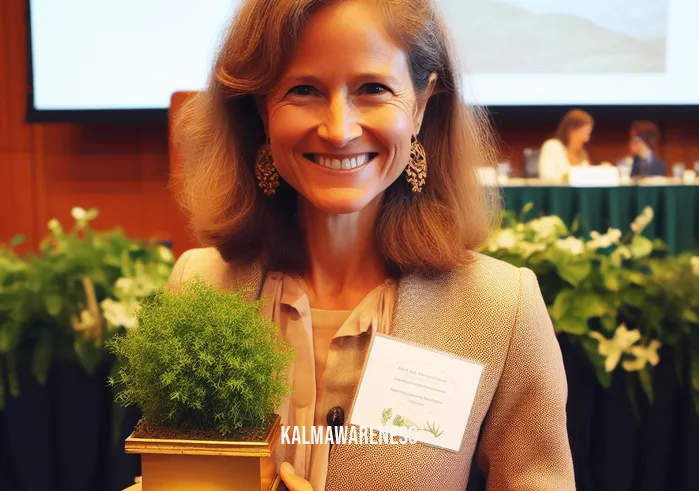The Serene Art of Quiet Walkers: Embracing Mindfulness Through Nature
In an age of constant noise, bustling crowds, and the relentless demands of modern life, the need for a calm oasis has never been greater. For many, this oasis is not found in the confines of a quiet room or through traditional meditation practices alone. Instead, it’s discovered in the simple yet profound act of walking in nature. Quiet walkers, as they are affectionately termed, have tapped into an age-old practice of merging mindfulness, walking, and the serenity of the natural world. By doing so, they’re not just walking—they’re transforming each step into an act of mindfulness and achieving unparalleled serenity and peace.
The Connection Between Mindfulness and Walking
For many, the term “mindfulness” might evoke images of someone sitting in a tranquil setting, eyes closed, lost in deep meditation. While such practices are indeed a crucial part of mindful movement and sleep, there’s a broader definition we should keep in mind. Mindfulness is the act of being present—fully aware of our thoughts, feelings, and surroundings without judgment. It’s an art that requires practice and patience.
Walking, particularly in nature, naturally complements this practice. As we walk, the rhythmic pattern of our steps serves as a grounding element, much like the element of some meditation exercises. This repetition, coupled with the sensory experience of nature—the rustling of leaves, the chirping of birds, the gentle touch of the breeze—anchors our attention to the present moment. As we shift our focus from internal worries to the world around us, we begin to touch that body part of our soul that craves connection and tranquility.
Nature as a Sanctuary for Serenity
Nature has a unique way of calming our minds. The vast landscapes remind us of our place in the universe, putting our worries into perspective. It’s no surprise that numerous studies have highlighted the myriad health benefits of spending time in nature. From reducing stress to enhancing our mood, nature is a powerful ally in our quest for well-being.
Moreover, as quiet walkers will attest, walking in nature isn’t just a physical exercise; it’s an act of sustainable self-care. By immersing ourselves in the beauty of the natural world, we are reminded of the simple joys of life—a lesson that teenagers walking in today’s fast-paced world would benefit from.
Serenity and Peace: The Ultimate Goal
The goal of every quiet walker is not just physical fitness or even mindfulness; it’s attaining a deeper state of serenity and peace. This state is one in which thoughts are not occupied by worry. It’s a state where we are clearing energy through meditation and introspection, allowing our minds to be peaceful. The journey to this state is not always straightforward. It requires patience, persistence, and a commitment to personal growth. But the rewards, as any quiet walker will tell you, are well worth the effort.
Invitation to the Journey
If you’re intrigued by the concept of quiet walkers and wish to delve deeper into the art of merging mindfulness, walking, and nature, you’re in for a treat. While today’s segment provides an overview, there’s a world of knowledge waiting for you in the next chapter. Whether you’re a novice eager to learn the basics or someone well-acquainted with Jack Kornfield’s meditation for beginners, the subsequent segments promise insights that cater to all.
In the end, being a quiet walker is not just about walking—it’s about discovering oneself, understanding the world, and finding serenity in the midst of chaos. As we delve deeper into this art in the subsequent chapters, you’ll gain tools, techniques, and knowledge to embark on your journey of self-discovery and inner peace.
So, are you ready to take the first step? If so, let’s journey together, exploring the depths of mindfulness and the magic of nature in the next chapter. Continue reading to uncover the beauty of becoming a quiet walker.

Embracing the Footsteps: The Deep Practices of Quiet Walkers
Walking has long been recognized as a means of transportation, a form of exercise, and even a leisure activity. However, for quiet walkers, every step is more than just a movement—it’s a deep connection to the present moment, to nature, and to oneself. Let’s dive deeper into the unique practices and beliefs of these serene wanderers.
The Rich Traditions Behind Quiet Walkers
For centuries, many cultures have recognized the importance of walking in silence and introspection. From the ancient pilgrimages undertaken by devotees seeking enlightenment to modern-day retreats, the act of walking mindfully has been cherished and practiced in myriad ways. The judgment of the wise has often been that silence, combined with the rhythmic motion of walking, can lead to profound insights.
Key Principles of Quiet Walkers:
- Intentionality: Every step is taken with purpose, understanding, and presence.
- Observation: Engaging deeply with the environment, noticing minute details and changes in nature.
- Gratitude: Expressing thanks for every experience, whether it’s a beautiful sunset or the challenging ascent of a hill.
- Respect: Acknowledging the natural world and ensuring minimal disturbance or harm.
- Connectivity: Understanding the interconnectedness of all beings and elements.
Unveiling the Benefits: A Snapshot
While it’s clear that walking in nature is beneficial, quiet walkers derive a unique set of advantages from their practice. To provide clarity on these benefits, let’s consult the following table:
| Benefit | Explanation | Enhanced by |
|---|---|---|
| Inner Peace | Achieving a state of calmness and clarity of mind. | Meditation made simple techniques during walks. |
| Heightened Sensory Awareness | Being more attuned to sights, sounds, and sensations. | Mirror gazing spiritual benefits. |
| Physical Well-being | Improved cardiovascular health, muscle strength, and stamina. | Regular and consistent walks. |
| Enhanced Emotional Resilience | Better handling of stress, anxiety, and challenging situations. | Rouse yoga practices complementing the walks. |
| Profound Spiritual Connection | Deepening the bond with nature, oneself, and the universe. | Insights from one for each blessed day. |
Walking Styles: Different Paths to the Same Destination
Quiet walkers might adapt various styles based on their goals, environment, or personal preferences. Some might choose paths that involve rigorous mountain trails, resonating with the principle of how we get deep so fast, while others may prefer gentle walks by a riverside, savoring every sound and sight.
- Nature’s Trailblazers: These walkers venture into untouched natural areas, seeking solitude and raw beauty.
- Sunset Serenaders: Preferring the quietude of dusk, they walk during sunset, basking in the golden hues.
- Mindful Mariners: Walking alongside water bodies, they find peace in the gentle ripples and waves.
- Dawn Dreamers: These early risers walk at the break of dawn, witnessing the world awaken.
Preparing for the Journey Ahead
Just as any journey requires some preparation, quiet walkers also equip themselves with essential knowledge and tools. A deep understanding of mindful hypnobirthing can offer insights into the power of the mind, while learning how to spell stabilize can lend stability to one’s walking posture and technique.
The journey of a quiet walker is continuous, evolving with every step. Their paths might vary, their pace might differ, but the destination remains the same—a deep, fulfilling connection with the present moment.
If this exploration of quiet walkers has stirred your curiosity, then the next chapter promises even more depth and insight. As we venture further, we’ll uncover the subtleties, challenges, and transformative power of this practice. So, are you eager to walk alongside us? Continue reading to immerse yourself further in the world of quiet walkers.

Silent Steps to Hope: The Inspiring Chronicles of Quiet Walkers
In a world often mired in chaos and cacophony, the silent steps of quiet walkers serve as a beacon of hope, an emblem of serenity. These individuals, who tread lightly upon the Earth with mindfulness and intention, inadvertently become sources of inspiration for many. Their journeys, both metaphorical and literal, offer lessons in resilience, patience, and hope. Let’s traverse these pathways and draw inspiration from the wisdom they offer.
Echoes of Wisdom: Resonating Quotes
Throughout history, sages, poets, and philosophers have celebrated the essence of silent walking and the inner peace it brings. Here are a few quotes that encapsulate the ethos of quiet walkers:
- “In every walk with nature, one receives far more than he seeks.” – John Muir
- “Walking is man’s best medicine.” – Hippocrates
- “A journey of a thousand miles begins with a single step.” – Lao Tzu
- “The quieter you become, the more you can hear.” – Ram Dass
- “While walking, touch peace with every step.” – Thich Nhat Hanh
Narratives of Inspiration: Real-life Chronicles
Lucia’s Quest for Peace: Plagued by the overwhelming pressures of urban life, Lucia found solace in the tranquil practices of silent walking. Every weekend, she would embark on a journey to be peaceful, treading the lesser-known paths of her city park. With every step, she found herself more attuned to the whispers of nature and the rhythm of her own heart. Her quiet walks became a ritual, not just a form of exercise, teaching her the significance of clearing energy meditation and how it enhanced her well-being.
Daniel’s Pursuit of Balance: Juggling a demanding job and family responsibilities, Daniel felt on the brink of burnout. It was during a retreat, where he was introduced to the concept of sustainable self-care, that he encountered the art of silent walking. For him, every walk became an exploration of mindfulness. Drawing inspiration from Jack Kornfield’s meditation for beginners, Daniel began to integrate walking meditation into his daily routine. Over time, he noticed a profound change in his mental clarity and overall disposition.
Anya’s Journey to Healing: Grief has its own unique language, one that Anya became intimately familiar with after losing a loved one. Trying to navigate her pain, she sought refuge in the woods. She embraced the teachings from the concept of involving attaining a peaceful state of mind in which thoughts are not occupied by worry, walking silently and allowing nature to cradle her grief. Over time, the woods became her sanctuary, her place of healing.
Drawing Hope from Every Footstep
Each of these individuals, while varied in their experiences and backgrounds, found a common thread of hope and healing through the practice of quiet walking. Their journeys underscore the incredible power of taking a step back from the clamor of daily life and stepping forward into the embrace of mindfulness and nature.
Silent walking, or the art of walking mindfully, serves as a testament to the age-old adage that sometimes, silence speaks louder than words. It’s in the hushed footsteps on a dew-kissed morning or the soft tread on a moonlit path that we often find the answers we seek and the inspiration to move forward.
As we’ve journeyed through the tales and wisdom of quiet walkers, you might be wondering about the practical aspects of embracing this practice in your daily life. In the next chapter, we delve deeper into the tangible steps, techniques, and advice to help you embark on your own journey as a quiet walker. Ready to lace up your shoes and take the first step? Continue reading to set forth on a path of serenity and inspiration.

The Anatomy of Silent Strides: Delving into the World of Quiet Walkers
The soothing allure of quiet walkers is undeniable. As we’ve explored in previous chapters, this practice is steeped in history, bolstered by real-life testimonials, and brimming with inspirational tales. Now, let’s peel back the layers and get into the heart of what makes quiet walking such a transformative experience.
Components of Quiet Walking
At first glance, silent walking might appear as just another form of strolling, but the depth it carries is profound. Here’s what constitutes the essence of quiet walking:
Mindful Engagement: At its core, quiet walking is deeply rooted in mindfulness. Each step is taken with intention, not just mechanically. This involves attaining a peaceful state of mind in which thoughts are not occupied by worry.
Nature’s Embrace: One of the hallmarks of silent walking is the connection with nature. The chirping of the birds, the rustling of leaves, and the gentle caress of the wind are all integral to this experience.
Serenity in Solitude: While you can engage in quiet walking with companions, there’s a unique peace found in solitary walks, leading one towards clearing energy meditation.
Physical & Mental Sync: It’s not just about moving your legs. Your mind and body harmonize, helping to stabilize emotions and thoughts. For those wondering how to spell stabilize in the context of emotional well-being, it’s about grounding oneself.
Benefits of Embarking on Silent Walks
Understanding the components is the first step; now let’s delve into the myriad benefits that await those who embrace this mindful practice:
Enhanced Mental Clarity: By distancing oneself from daily distractions, one can achieve a clearer perspective on challenges and decisions.
Improved Physical Health: It’s a gentle form of exercise, promoting cardiovascular health and muscular endurance, especially for teenagers walking.
Emotional Equilibrium: The rhythmic pattern of walking, coupled with the sounds of nature, can significantly reduce stress and anxiety.
Deepened Connection to the Self: In the quiet moments, one often discovers inner truths, reflecting on personal goals, aspirations, and the judgment of the wise within.
Fostering Creativity: Solutions to challenges and bursts of inspiration often come when the mind is at ease, making quiet walks a favorite among many creatives.
Integrating Quiet Walks into Daily Life
For those eager to incorporate quiet walking into their routine, here’s a basic guideline:
Start Small: Don’t feel pressured to walk for long durations initially. Even a ten-minute walk can be impactful.
Choose Your Path: While nature trails are optimal, city dwellers can find pockets of serenity in parks or quiet streets.
Dress Comfortably: Wear appropriate shoes and attire. Remember, this is not a race; it’s a journey.
Embrace the Silence: This might be challenging initially, especially for those used to headphones or constant chatter. But the rewards of silence are plentiful.
As our exploration of quiet walkers starts drawing to a close, a sense of completeness and tranquility might be settling within you. The transformative power of silent strides is, indeed, profound. And while this chapter provides a roadmap to understanding and integrating quiet walking, our final chapter will encapsulate its essence and offer final reflections. Eager to find the culmination of our journey? Continue reading as we tie all the threads together in the concluding chapter.

Whispered Wisdom: Reflecting on the Journey with Quiet Walkers
Our expedition into the world of quiet walkers has been enlightening, hasn’t it? The stillness of each step, the connection with the surrounding environment, and the profound inner reflections form a holistic experience that goes beyond mere physical movement. As we draw the curtain on this discourse, let’s reflect upon the wisdom we’ve gathered, the serenity we’ve felt, and the many paths still waiting to be trodden.
Quiet Walkers: More Than Just a Walk
The essence of silent strides lies not in the steps taken but in the moments lived. Through our journey, we’ve learned that quiet walking offers:
A chance to cultivate sustainable self-care, allowing us to recharge both mentally and physically.
An avenue to practice meditation made simple, where the environment becomes the guide, leading us into tranquility.
The opportunity to appreciate nature’s intricacies, from the subtle rustling of leaves to the distant chirping of birds.
Glimmers of Insight
Reflecting on our journey, it’s evident that the realm of quiet walking is vast. We’ve delved deep into its many facets, from understanding its foundation to experiencing its myriad benefits. Each chapter served as a stepping stone, building upon the last, leading us closer to the core of what it means to be a quiet walker.
But remember, it’s not just about knowledge. It’s about transformation. Quiet walking is an invitation to become more present, to become more aware of the element of some meditation exercises, and to foster a sense of balance in our hectic lives.
Stepping Forward
As you find solace in the rhythm of your footsteps and the embrace of the world around you, remember to cherish these moments. Keep in mind, as you would with any definition, that it’s the experience that counts, not just the act itself.
To those looking for more avenues of tranquility, consider diving into practices like mirror gazing for spiritual benefits or even exploring the wisdom of Jack Kornfield’s meditation for beginners.
A Call to Exploration
Curious souls, our journey on quiet walkers might be concluding, but there’s an entire universe of serenity, mindfulness, and well-being out there. Explore more in our magazine, dive deeper into topics that resonate with you, and remember, every article is a new journey.
Gratitude in Every Step
A heartfelt thank you for accompanying us on this enlightening voyage. Your presence, curiosity, and openness have made this discourse all the more enriching. As we move forward, rest assured, our magazine promises more insights, more revelations, and more moments of zen in future editions.
To new beginnings, silent strides, and paths yet unexplored. Until next time, keep walking the walk of serenity and grace. And always, always keep exploring.




